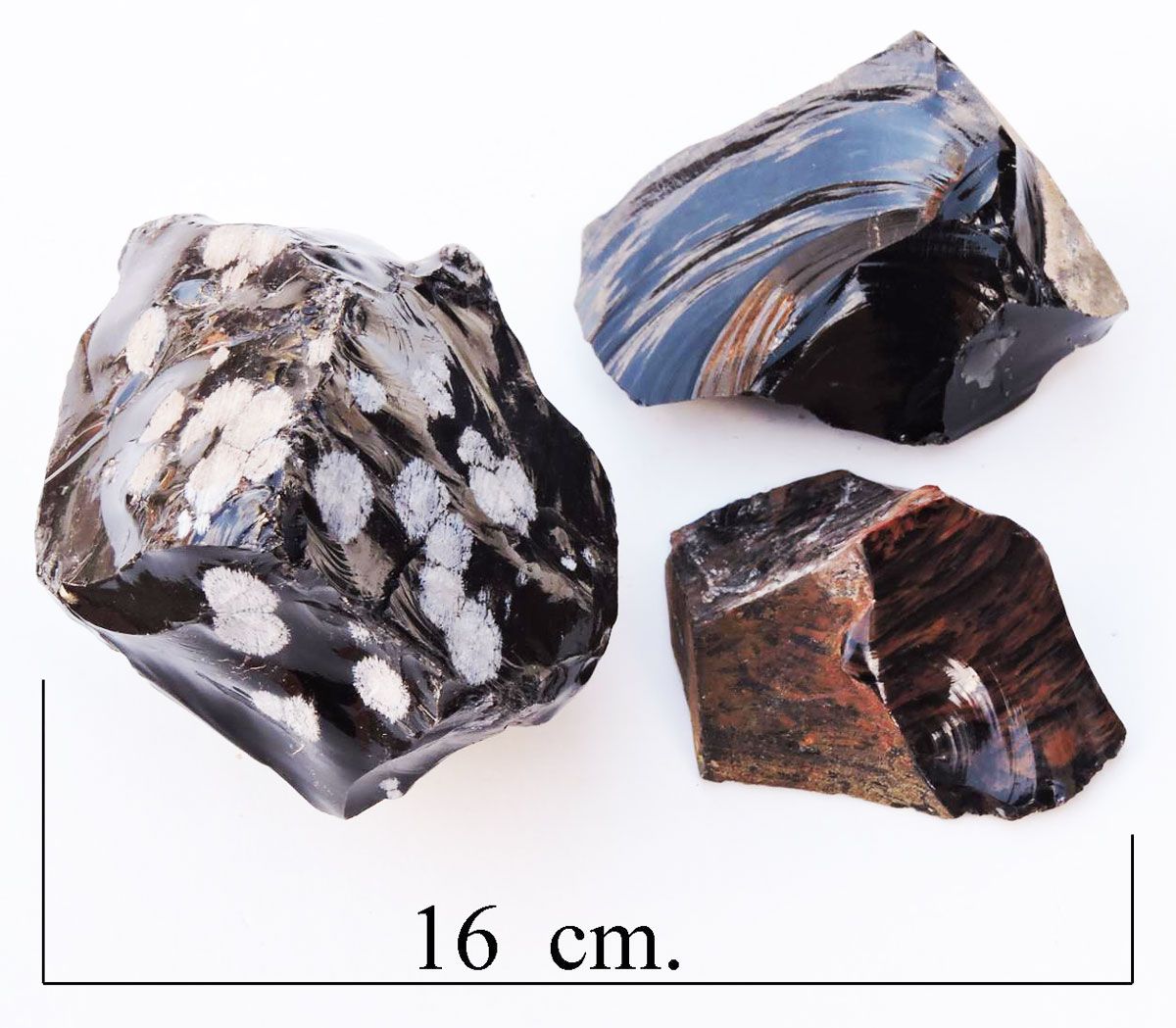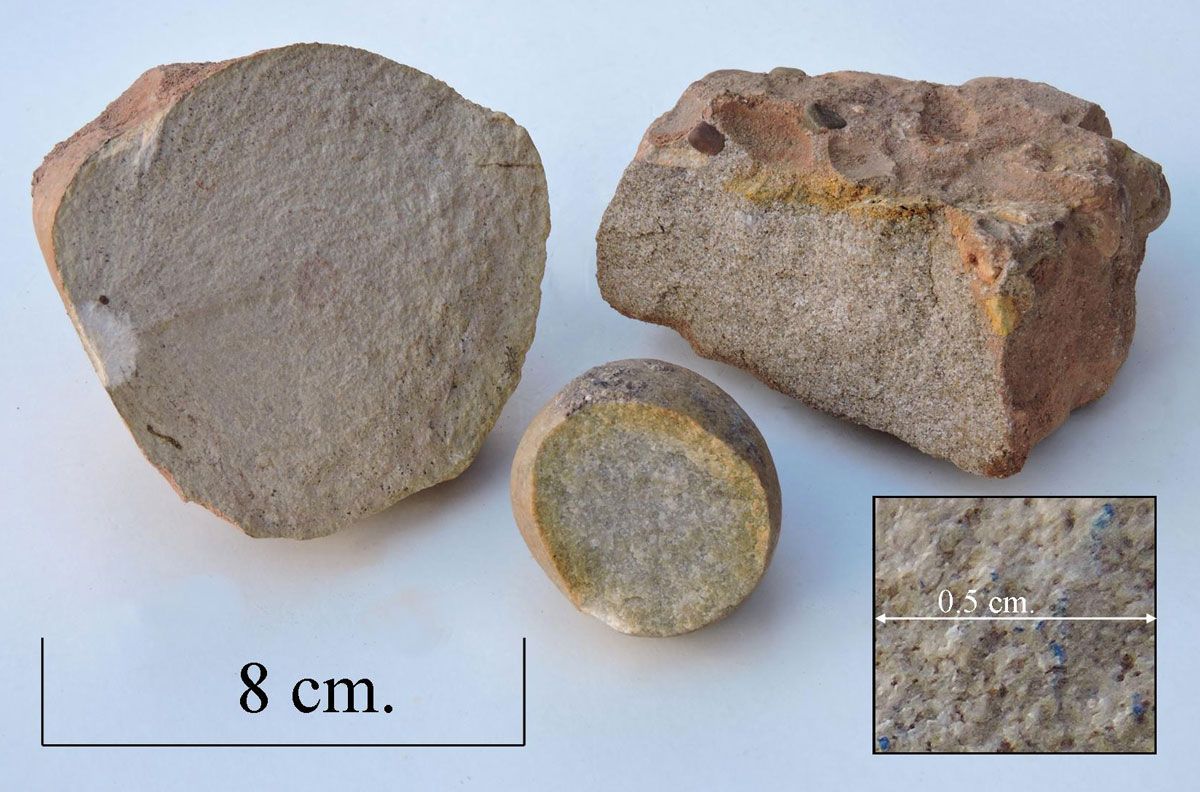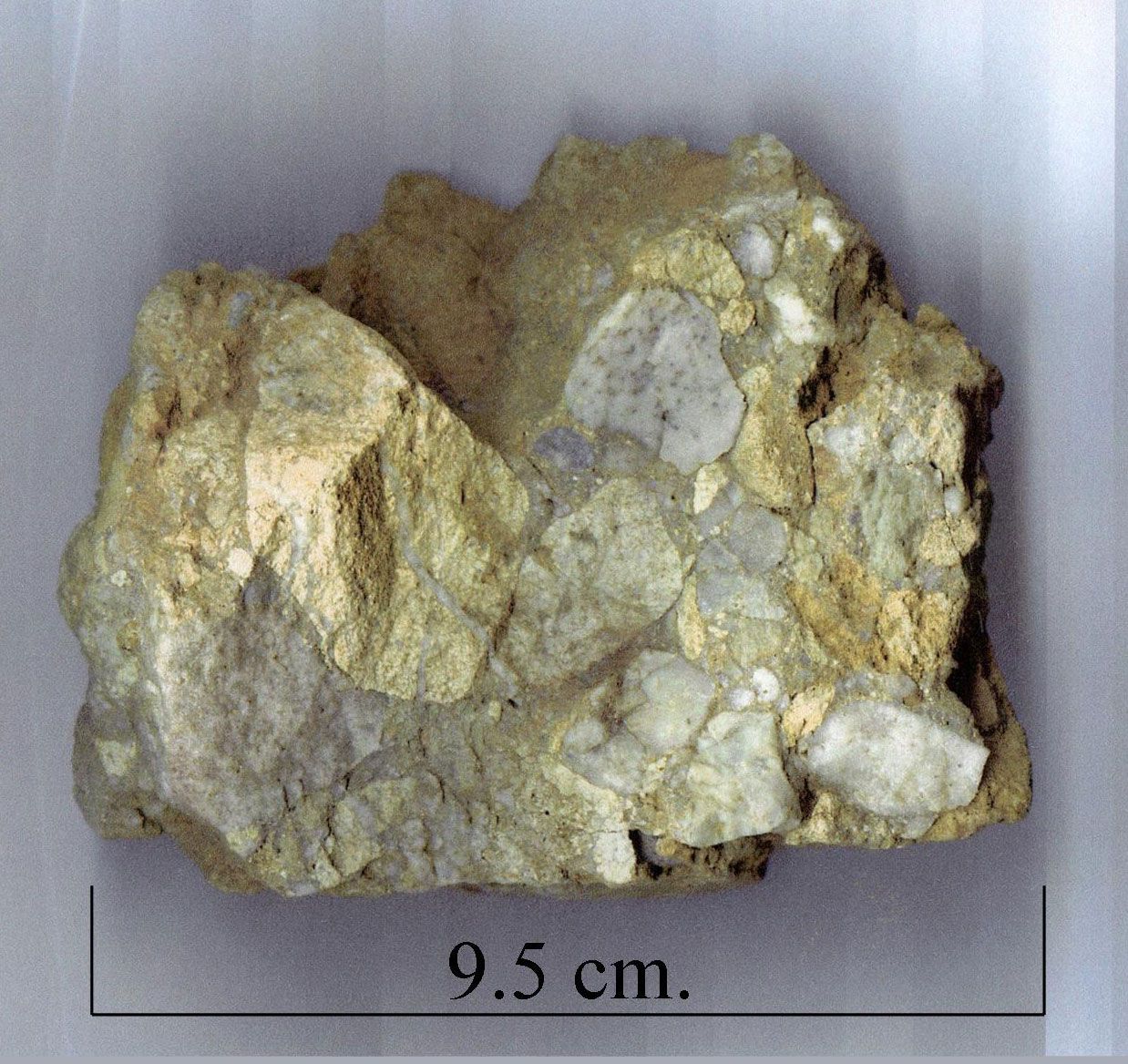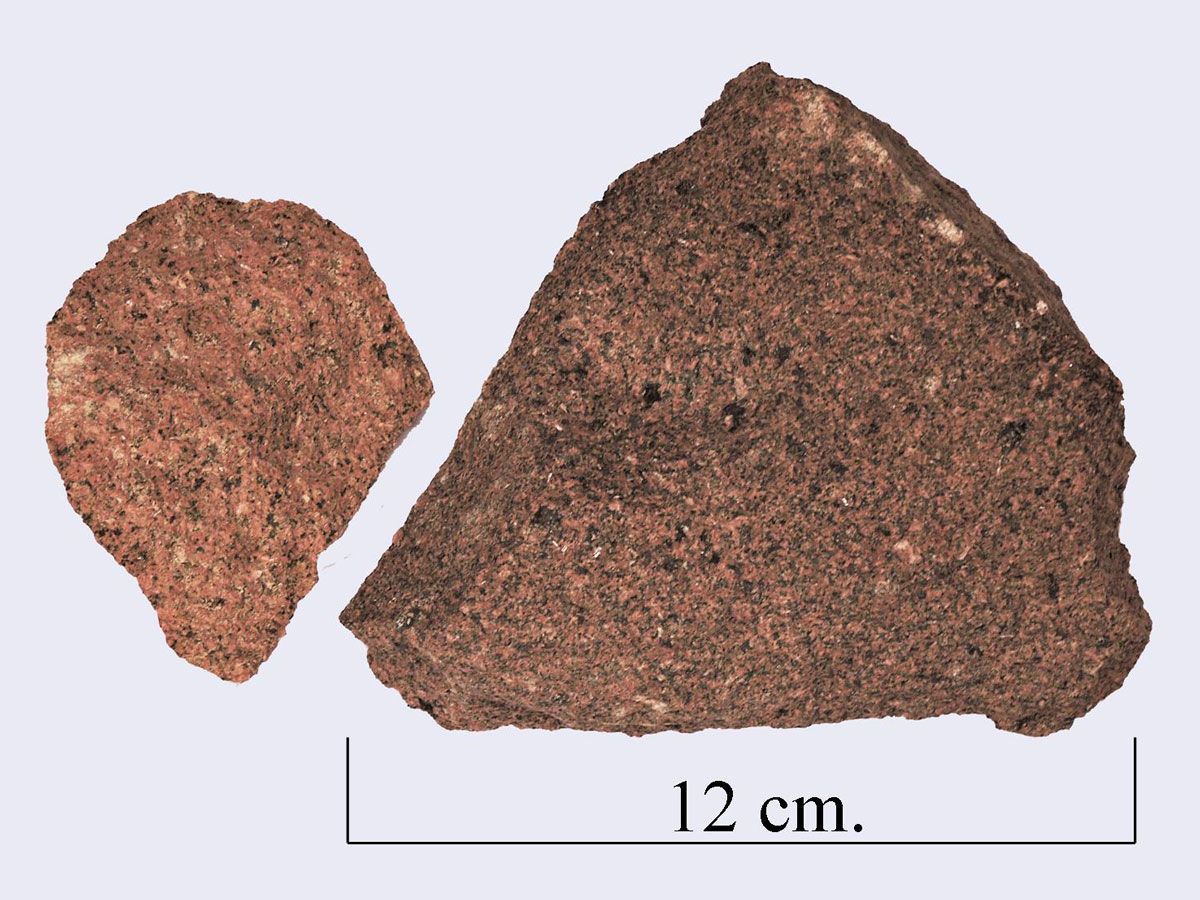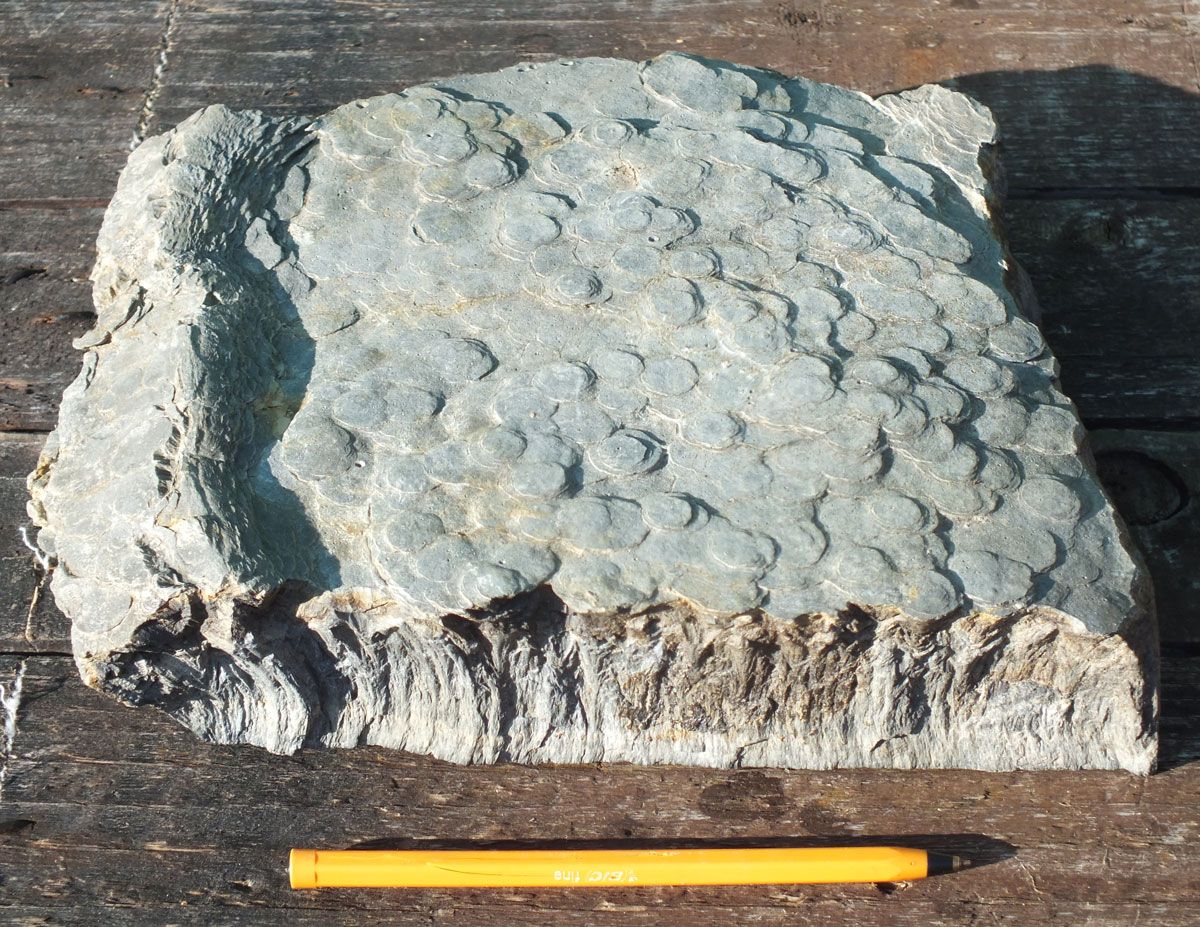
Concretion, cone-in-cone var.
Concretions in central Wales are so common that it is almost embarrassing to include them in my rock collection, however I picked this one up because it illustrates beautifully the distinctive surface of a cone-in -cone concretion. It is only part of a concretion, and the curvature at the edge suggests that it was an oblong shape with the length being about twice the width.. This one was collected on the Waen, Trefeglwys, Powys.
